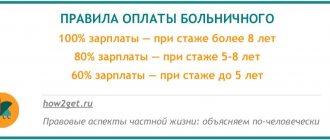Hello! In this article we will talk about excise taxes on alcohol.
Today you will learn:
- What is excise duty called and what types is it divided into?
- Who pays excise taxes on alcohol;
- What is the procedure for calculating and paying excise tax?
The rates for 2021 for a number of positions are brought into compliance with Law No. 301-FZ of 08/03/2018. For alcoholic products it remained at the 2021 level. We’ll talk about this, as well as the terms and procedures for payment today.
Content
- Excise tax on alcohol: the essence of the concept and why it is needed
- What is subject to excise tax
- Who pays excise taxes
- How is it different from VAT?
- Types of excise tax rates
- Excise tax rates on alcohol
- Level of increase in alcohol prices
- Calculation and payment of excise taxes
- Timing and procedure
- Goods exempt from excise duty
- The situation with other excisable products
- Labeling of alcoholic beverages
- Consequences of non-payment
- Conclusion
Unified state automated information system
The latest innovation is the mandatory connection to the unified information system EGAIS for everyone who wants to sell strong drinks. And it doesn’t matter retail or on tap. It is thanks to this system that it became possible to carry out strict control of each item of goods. Therefore, starting from 2021, it is prohibited to sell an excise product without connecting to this database. Those caught committing such a violation will be required to pay considerable sums in fines.
How does EGAIS work?
This control system also makes it possible to quickly determine the data of imported receipts: when and by whom it was imported into the country, composition indicators, strength and place of sale. With the help of EGAIS, it has become possible to avoid smuggled goods. For the alcohol business to flourish you need:
- acquire new excise taxes on alcohol;
- connect to EGAIS;
- get a license. And it doesn’t matter what type of business the entrepreneur is in. License permission is mandatory for everyone without exception.
To issue the latter, there is the Federal Service for the Regulation of Alcohol Products. It has branches in Moscow and other large cities of the country. This gives it the advantage of giving it control over producers and buyers even in local markets. Before contacting the service for permission, all legal entities need to collect the relevant documents and fill out an application for its acquisition.
Exception: private entrepreneurs selling beer and drinks can do so without permission, provided they have a permanent retail location.
Experts from the federal service have been reviewing the request for a month. After which, they have the right to refuse a license if there are reasons for this. If a positive decision is made, the document is issued for a maximum of five years.
Excise tax on alcohol: the essence of the concept and why it is needed
Excise tax is a duty established by the state for producers of alcoholic beverages, tobacco products and a number of other goods. But today we will dwell in more detail only on the tax for alcohol producers. This tax is called internal, operating within the borders of the state.
In addition, excise taxes in Russia are included in the price of goods, which means that the consumer pays for them. If excisable products are sold at retail, the amount of excise tax is not allocated.
So why are excise taxes needed? The answer is simple: so that the state receives profit from the manufacture of products that are popular among the population. And also, according to experts, increasing excise taxes is an effective measure in the fight against excessive alcohol consumption.
Negative sides:
- Increase in volumes of illegally imported alcohol;
- The risk of increasing sales of obviously low-quality alcoholic beverages.
New excise stamps for alcohol
The Unified State Automated Information System (USAIS) controls the number of bottles of alcoholic beverages sold. Using the excise stamp affixed to the bottle, the state keeps records of taxes and goods. The excise tax stamp on alcohol is a reporting document. EGAIS has been tested since 2005 and until January 1, 2019, manufacturers purchased old-style excise taxes. Brands were counted in batches, there was no connection to the number of bottles, and 2 and 3 purchases were made for one brand. New excise stamps for alcohol in 2021 were launched on January 1, 2021.
It is no longer possible to buy old-style stamps. Manufacturers have the right to use previously purchased brands until they run out. The new excise taxes contain a unique barcode that allows bottles to be counted in batches. After purchasing alcohol with a new brand, the information is automatically uploaded to EGAIS. It will not be possible to make a repeat purchase with this brand.
When receiving alcohol from a supplier, the store takes into account each bottle and records it in the database. If you omit the acceptance procedure, EGAIS will block the goods and fine the seller for attempting to illegally sell a bottle that is not recorded in the accounting list. Such control was introduced to combat counterfeit alcohol products. Illegal trafficking leads not only to fines, but also to a threat to the health of consumers. Total accounting helps you cope with two tasks at the same time.
How is it different from VAT?
VAT, like excise tax, is an indirect tax. But there are fundamental differences between them, which we will discuss in more detail.
- VAT is charged on a much larger volume of goods. It also applies to services provided by the payer. In turn, excise taxes are established only on goods;
- The next difference is that excise tax is a real burden on the entrepreneur, and when paying VAT, if you use deductions wisely, the burden can be significantly reduced;
- It is not always possible to compensate for the excise tax rate using a deduction;
- Excise taxes, unlike VAT, have a serious impact on the profitability of the company.
Excise taxes in Russia began to operate in 1991. The main elements from which the excise tax is formed are the base, object and tax rate.
Types of excise tax rates
- Specific;
- Combined;
- Ad valorem.
Specific
Presented in a fixed amount for 1 unit of goods. Most often used.
Ad valorem
It is uniform for the entire country and is set as a percentage of excisable goods. Its weakness is that each time you need to calculate the customs value of the product.
Combined
Combines specific and ad valorem rates.
Excise tax rates on alcohol
Next, we will consider the amount of excise taxes on alcoholic products, presenting the information in table form. And then we’ll do a little comparative analysis.
Excise taxes on alcohol in 2021:
| Product type | Tax rate 2021 | Tax rate 2021 | Tax rate 2021 (from 01.01.) |
| Ethyl. alcohol, which is sold by companies involved in the production of cosmetics. or perfume. products | 1 liter / 0 rub. | 1 liter / 0 rub. | 1 liter / 0 rub. |
| Ethyl. alcohol sold by companies that do not pay advance excise taxes | 1 liter – 107 rub. | 1 liter – 107 rub. | 1 liter – 107 rub. |
| Alcohol containing more than 9% alcohol (excluding beer and sparkling wine) | 1 liter – 523 rub. | 1 liter – 523 rub. | 1 liter – 523 rub. |
| Alcohol containing less than 9% alcohol (excluding beer and sparkling wine) | 1 liter – 418 rub. | 1 liter – 418 rub. | 1 liter – 418 rub. |
| Wine, excluding sparkling wine | 1 liter – 5 rub. | 1 liter – 5 rub. | 1 liter – 5 rub. |
| Sparkling wine | 1 liter – 36 rub. | 1 liter – 36 rub. | 1 liter – 27 rub. |
| Beer with up to 0.5% alcohol | 1 liter – 0 rub. | 1 liter – 0 rub. | 1 liter – 0 rub. |
| Beer containing from 0.5% to 8.6% alcohol | 1 liter – 21 rub. | 1 liter – 21 rub. | 1 liter – 21 rub. |
| Beer with more than 8.6% | 1 liter – 39 rub. | 1 liter – 39 rub. | 1 liter – 39 rub. |
The excise tax on alcohol brings the highest income to the state when compared with other taxes. And tax rates on vodka are much higher than on other alcohol. This is an argument in favor of reducing the production of such a drink.
Ethyl alcohol is the main source of profit from the use of excise duties. The excise duty on alcohol brings the highest income to the state when compared with other taxes. And tax rates on vodka are much higher than on other alcohol. This is an argument in favor of reducing the production of such a drink.
Comparing rates over several years, we see that in 2021 they remained almost at the 2021 level.
Let’s see below how this affected alcohol prices in various retail chains.
Excise taxes on tobacco
According to the amendments, the excise tax rate on cigarettes and cigarettes in 2021 will be 2,359 rubles per 1 thousand pieces, on vapes and electronic cigarettes - 60 rubles per piece. The excise tax rate on cigarettes and cigarettes in 2023 will be 2,552 rubles per 1 thousand pieces plus 16% of the estimated cost, calculated on the basis of the maximum retail price, but not less than 3,467 rubles per 1 thousand pieces. The excise tax on vapes and electronic cigarettes will be 64 rubles in 2023, on cigars - 278 rubles per piece, on cigarillos, bidis and kreteks - 3965 rubles per 1 thousand pieces.
Level of increase in alcohol prices
Excise taxes on alcohol are planned to increase only in 2021. on the:
- Products containing ethyl alcohol over 9% up to 544 rubles, the excise tax is now 523 rubles.
- Products containing ethyl alcohol less than 9% up to 435 rubles, against 418 rubles, the current rate for 2021.
- Wine – the excise tax rate will be 19 rubles. per liter, now it is 18 rubles.
- Ethyl alcohol sold by companies that do not pay advance excise tax payments up to 111 rubles. per liter Now the excise tax rate is 107 rubles. per liter
Clause 1, Article 193 of the Tax Code of the Russian Federation
Taxation of excisable goods from January 1, 2021 is carried out at the following tax rates:
| Types of excisable goods | Tax rate (in percent and (or) rubles per unit of measurement) | ||
| from January 1 to December 31, 2021 inclusive | from January 1 to December 31, 2021 inclusive | from January 1 to December 31, 2021 inclusive | |
| Ethyl alcohol produced from food or non-food raw materials, including denatured ethyl alcohol, raw alcohol, wine, grape, fruit, cognac, Calvados, whiskey distillates: | |||
| sold to organizations engaged in the production of alcohol-containing perfumery and cosmetic products in metal aerosol packaging and (or) alcohol-containing household chemical products in metal aerosol packaging, and organizations paying an advance payment of excise tax (including ethyl alcohol imported into the Russian Federation from the territories of member states of the Eurasian Economic Union, which is a product of the Eurasian Economic Union), and (or) transferred when performing transactions recognized as an object of excise taxation in accordance with subparagraph 22 of paragraph 1 of Article 182 of this Code, and (or) sold (or transferred by producers within the structure of one organization) for the production of goods that are not recognized as excisable in accordance with subparagraph 2 of paragraph 1 of Article 181 of this Code; | 0 rubles per 1 liter of anhydrous ethyl alcohol contained in excisable goods | 0 rubles per 1 liter of anhydrous ethyl alcohol contained in excisable goods | 0 rubles per 1 liter of anhydrous ethyl alcohol contained in excisable goods |
| sold to organizations that do not pay an advance payment of excise tax (including ethyl alcohol imported into the Russian Federation, which is not a product of the Eurasian Economic Union), and (or) transferred within the structure of one organization when the taxpayer carries out transactions recognized as subject to excise taxation, with the exception of transactions , provided for by subparagraph 22 of paragraph 1 of Article 182 of this Code, as well as with the exception of ethyl alcohol sold or transferred by producers within the structure of one organization for the production of goods not recognized as excisable in accordance with subparagraph 2 of paragraph 1 of Article 181 of this Code, and ethyl alcohol sold organizations engaged in the production of alcohol-containing perfumery and cosmetic products in metal aerosol packaging and (or) alcohol-containing household chemical products in metal aerosol packaging | 107 rubles per 1 liter of anhydrous ethyl alcohol contained in excisable goods | 111 rubles per 1 liter of anhydrous ethyl alcohol contained in excisable goods | 115 rubles per 1 liter of anhydrous ethyl alcohol contained in excisable goods |
| Alcohol-containing perfumery and cosmetic products in metal aerosol packaging | 0 rubles per 1 liter of anhydrous ethyl alcohol contained in excisable goods | 0 rubles per 1 liter of anhydrous ethyl alcohol contained in excisable goods | 0 rubles per 1 liter of anhydrous ethyl alcohol contained in excisable goods |
| Alcohol-containing household chemical products in metal aerosol packaging | 0 rubles per 1 liter of anhydrous ethyl alcohol contained in excisable goods | 0 rubles per 1 liter of anhydrous ethyl alcohol contained in excisable goods | 0 rubles per 1 liter of anhydrous ethyl alcohol contained in excisable goods |
| Alcohol-containing products (except for alcohol-containing perfumery and cosmetic products in metal aerosol packaging and alcohol-containing household chemical products in metal aerosol packaging) | 418 rubles per 1 liter of anhydrous ethyl alcohol contained in excisable goods | 435 rubles per 1 liter of anhydrous ethyl alcohol contained in excisable goods | 452 rubles per 1 liter of anhydrous ethyl alcohol contained in excisable goods |
| Alcohol products with a volume fraction of ethyl alcohol over 9 percent (except for beer, wines, fruit wines, sparkling wines (champagne), wine drinks made without the addition of rectified ethyl alcohol produced from food raw materials, and (or) alcoholized grape or other fruit wort, and (or) wine distillate, and (or) fruit distillate) | 523 rubles per 1 liter of anhydrous ethyl alcohol contained in excisable goods | 544 rubles per 1 liter of anhydrous ethyl alcohol contained in excisable goods | 566 rubles per 1 liter of anhydrous ethyl alcohol contained in excisable goods |
| Alcohol products with a volume fraction of ethyl alcohol up to 9 percent inclusive (except for beer, drinks made from beer, wines, fruit wines, sparkling wines (champagnes), cider, poiret, mead, wine drinks made without the addition of rectified ethyl alcohol, produced from food raw materials, and (or) alcoholized grape or other fruit must, and (or) wine distillate, and (or) fruit distillate) | 418 rubles per 1 liter of anhydrous ethyl alcohol contained in excisable goods | 435 rubles per 1 liter of anhydrous ethyl alcohol contained in excisable goods | 452 rubles per 1 liter of anhydrous ethyl alcohol contained in excisable goods |
| Wines, with the exception of wines with a protected geographical indication, with a protected designation of origin, as well as sparkling wines (champagnes), fruit wines, wine drinks made without the addition of rectified ethyl alcohol produced from food raw materials and (or) alcoholized grape or other fruit must, and (or) wine distillate, and (or) fruit distillate | 18 rubles per 1 liter | 19 rubles per 1 liter | 20 rubles per 1 liter |
| Wines with a protected geographical indication, with a protected designation of origin, with the exception of sparkling wines (champagnes) | 5 rubles per 1 liter | 5 rubles per 1 liter | 6 rubles per 1 liter |
| Cider, poire, mead | 21 rubles per 1 liter | 22 rubles per 1 liter | 23 rubles per 1 liter |
| Sparkling wines (champagnes), with the exception of sparkling wines (champagnes) with a protected geographical indication, with a protected designation of origin | 36 rubles per 1 liter | 37 rubles per 1 liter | 38 rubles per 1 liter |
| Sparkling wines (champagnes) with protected geographical indication, with protected designation of origin | 14 rubles per 1 liter | 14 rubles per 1 liter | 15 rubles per 1 liter |
| Beer with a standard (standardized) content of ethyl alcohol by volume up to 0.5 percent inclusive | 0 rubles per 1 liter | 0 rubles per 1 liter | 0 rubles per 1 liter |
| Beer with a standard (standardized) content of ethyl alcohol by volume over 0.5 percent and up to 8.6 percent inclusive, drinks made from beer | 21 rubles per 1 liter | 22 rubles per 1 liter | 23 rubles per 1 liter |
| Beer with a normative (standardized) content of ethyl alcohol by volume over 8.6 percent | 39 rubles per 1 liter | 41 rubles per 1 liter | 43 rubles per 1 liter |
| Pipe, smoking, chewing, sucking, snorting, hookah tobacco (except for tobacco used as raw material for the production of tobacco products) | 3,050 rubles per 1 kg | 3,172 rubles per 1 kg | 3,299 rubles per 1 kg |
| Cigars | 207 rubles for 1 piece | 215 rubles for 1 piece | 224 rubles for 1 piece |
| Cigarillos (cigaritas), bidis, kretek | 2,938 rubles for 1,000 pieces | 3,055 rubles for 1,000 pieces | 3,177 rubles for 1,000 pieces |
| Cigarettes, cigarettes | 1,890 rubles per 1,000 pieces + 14.5 percent of the estimated cost, calculated based on the maximum retail price, but not less than 2,568 rubles per 1,000 pieces | 1,966 rubles per 1,000 pieces + 14.5 percent of the estimated cost, calculated based on the maximum retail price, but not less than 2,671 rubles per 1,000 pieces | 2,045 rubles per 1,000 pieces + 14.5 percent of the estimated cost, calculated based on the maximum retail price, but not less than 2,778 rubles per 1,000 pieces |
| Tobacco (tobacco products) intended for consumption by heating | 5,808 rubles per 1 kg | 6,040 rubles per 1 kg | 6,282 rubles per 1 kg |
| Electronic nicotine delivery systems | 48 rubles for 1 piece | 50 rubles for 1 piece | 52 rubles for 1 piece |
| Liquids for electronic nicotine delivery systems | 12 rubles per 1 ml | 13 rubles per 1 ml | 14 rubles per 1 ml |
| Passenger cars: | |||
| with engine power up to 67.5 kW (90 hp) inclusive | 0 rubles for 0.75 kW (1 hp) | 0 rubles for 0.75 kW (1 hp) | 0 rubles for 0.75 kW (1 hp) |
| with engine power over 67.5 kW (90 hp) and up to 112.5 kW (150 hp) inclusive | 47 rubles for 0.75 kW (1 hp) | 49 rubles for 0.75 kW (1 hp) | 51 rubles for 0.75 kW (1 hp) |
| with engine power over 112.5 kW (150 hp) and up to 147 kW (200 hp) inclusive | 454 rubles for 0.75 kW (1 hp) | 472 rubles for 0.75 kW (1 hp) | 491 rubles for 0.75 kW (1 hp) |
| with engine power over 147 kW (200 hp) and up to 220 kW (300 hp) inclusive | 743 rubles for 0.75 kW (1 hp) | 773 rubles for 0.75 kW (1 hp) | 804 rubles for 0.75 kW (1 hp) |
| with engine power over 220 kW (300 hp) and up to 294 kW (400 hp) inclusive | 1,267 rubles for 0.75 kW (1 hp) | 1,317 rubles for 0.75 kW (1 hp) | 1,370 rubles for 0.75 kW (1 hp) |
| with engine power over 294 kW (400 hp) and up to 367 kW (500 hp) inclusive | 1,310 rubles for 0.75 kW (1 hp) | 1,363 rubles for 0.75 kW (1 hp) | 1,418 rubles for 0.75 kW (1 hp) |
| with engine power over 367 kW (500 hp) | 1,354 rubles for 0.75 kW (1 hp) | 1,408 rubles for 0.75 kW (1 hp) | 1,464 rubles for 0.75 kW (1 hp) |
| Motorcycles with engine power over 112.5 kW (150 hp) | 454 rubles for 0.75 kW (1 hp) | 472 rubles for 0.75 kW (1 hp) | 491 rubles for 0.75 kW (1 hp) |
| Automotive gasoline: | |||
| not corresponding to class 5 | 13,100 rubles per 1 ton | 13,100 rubles per 1 ton | 13,624 rubles per 1 ton |
| class 5 | 12,314 rubles per 1 ton | 12,752 rubles per 1 ton | 13,262 rubles per 1 ton |
| Diesel fuel | 8,541 rubles per 1 ton | 8,835 rubles per 1 ton | 9,188 rubles per 1 ton |
| Motor oils for diesel and (or) carburetor (injection) engines | 5,400 rubles per 1 ton | 5,616 rubles per 1 ton | 5,841 rubles per 1 ton |
| Aviation kerosene | 2,800 rubles per 1 ton | 2,800 rubles per 1 ton | 2,800 rubles per 1 ton |
| Middle distillates | 9,241 rubles per 1 ton | 9,535 rubles per 1 ton | 9,916 rubles per 1 ton. |
(Clause as amended by Federal Law dated 03.08.2018 No. 301-FZ)
Calculation and payment of excise taxes
In this part of our conversation, we will give an example of how excise tax is calculated, for example, at a fixed rate.
For this, the following calculation formula is used:
A = Nb * Tc, where A is the accrued amount of excise duty, Nb is the tax base (the number of goods sold), Tc is the fixed rate.
So, Company S. produced and sold 700 liters of beer, which is strong. This means that she will have to pay: 700 * 21 = 14,700 rubles.
The combined rate is calculated using the following formula:
A = Nb * Tc + O + Ac /100%, where A is the amount of excise duty, Nb is the tax base, Tc is a fixed rate, O is the amount that will be received upon the sale of Nb, Ac is the percentage rate.








